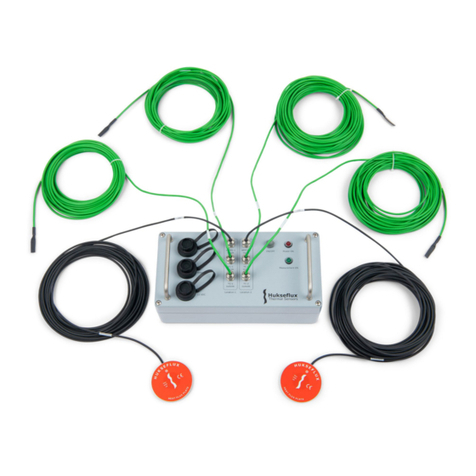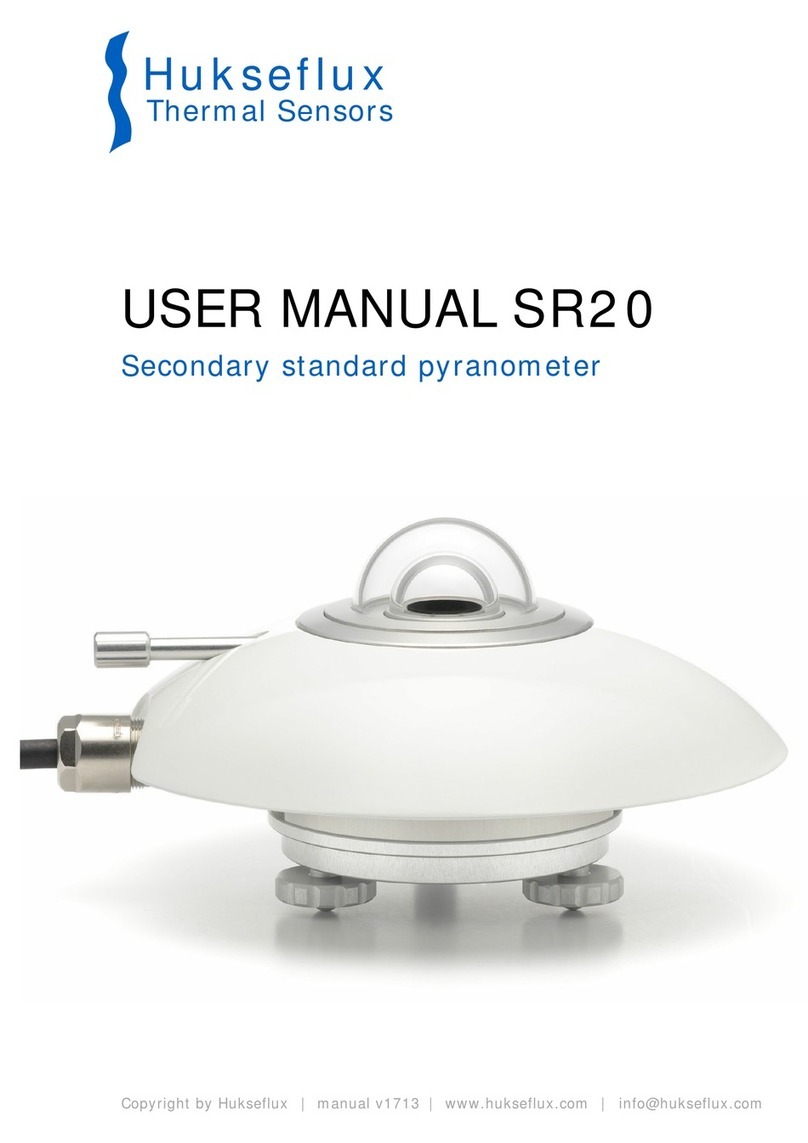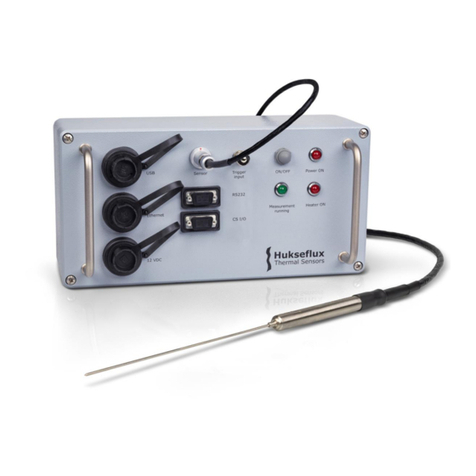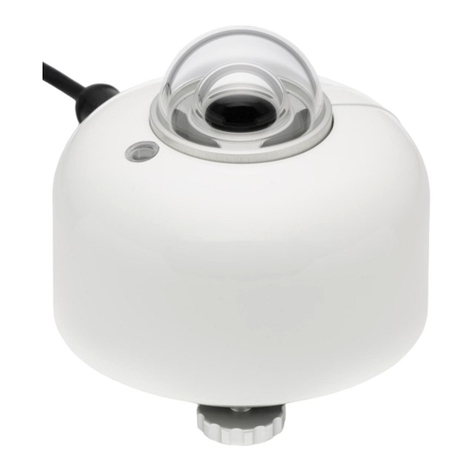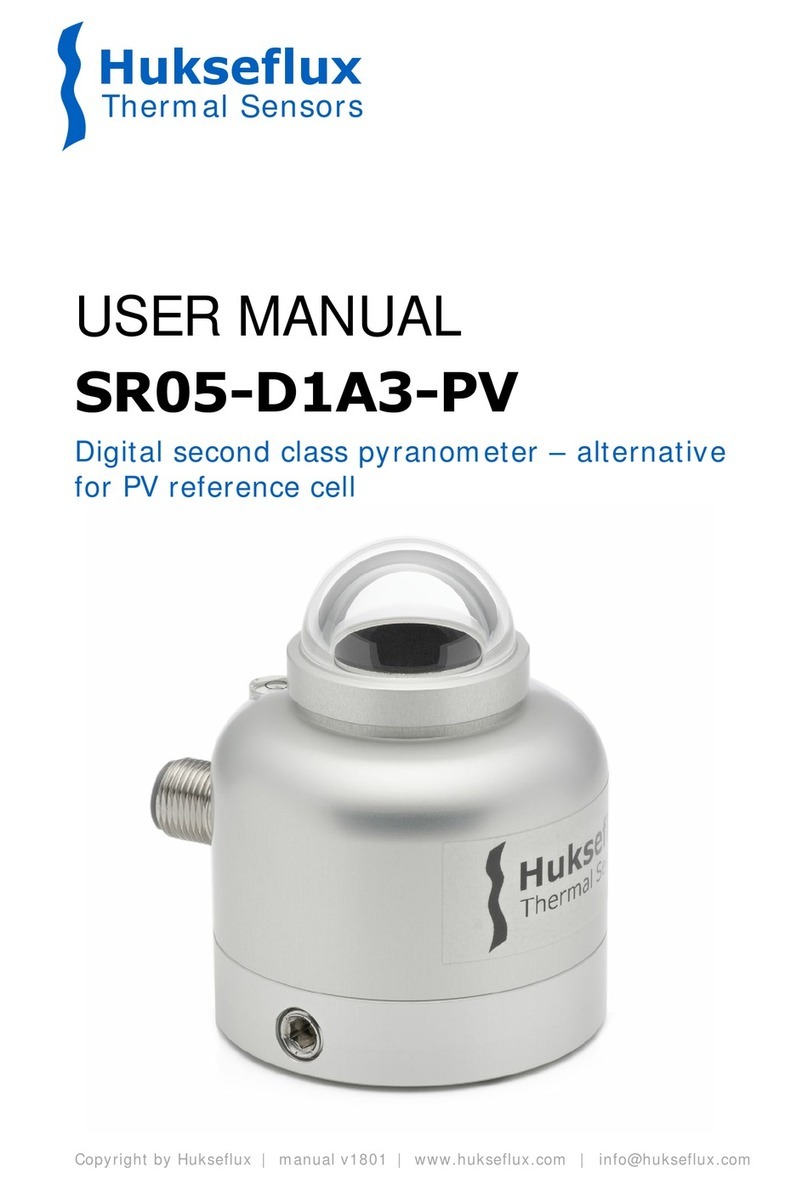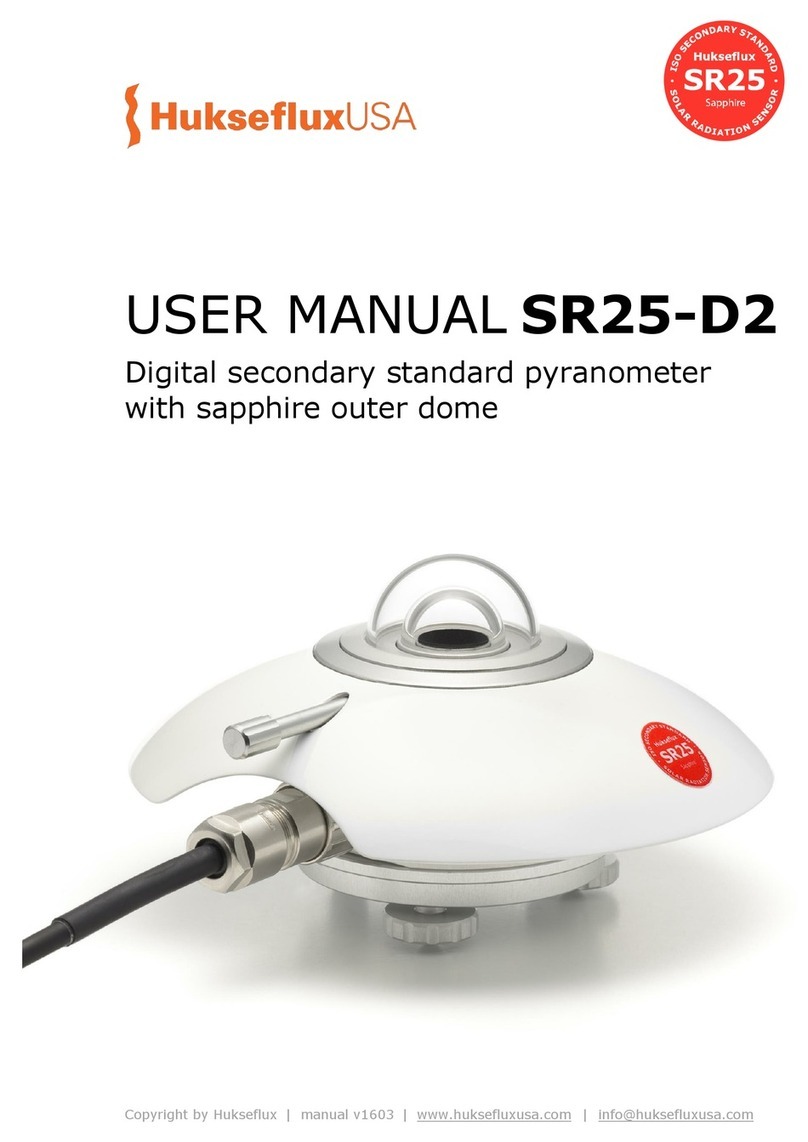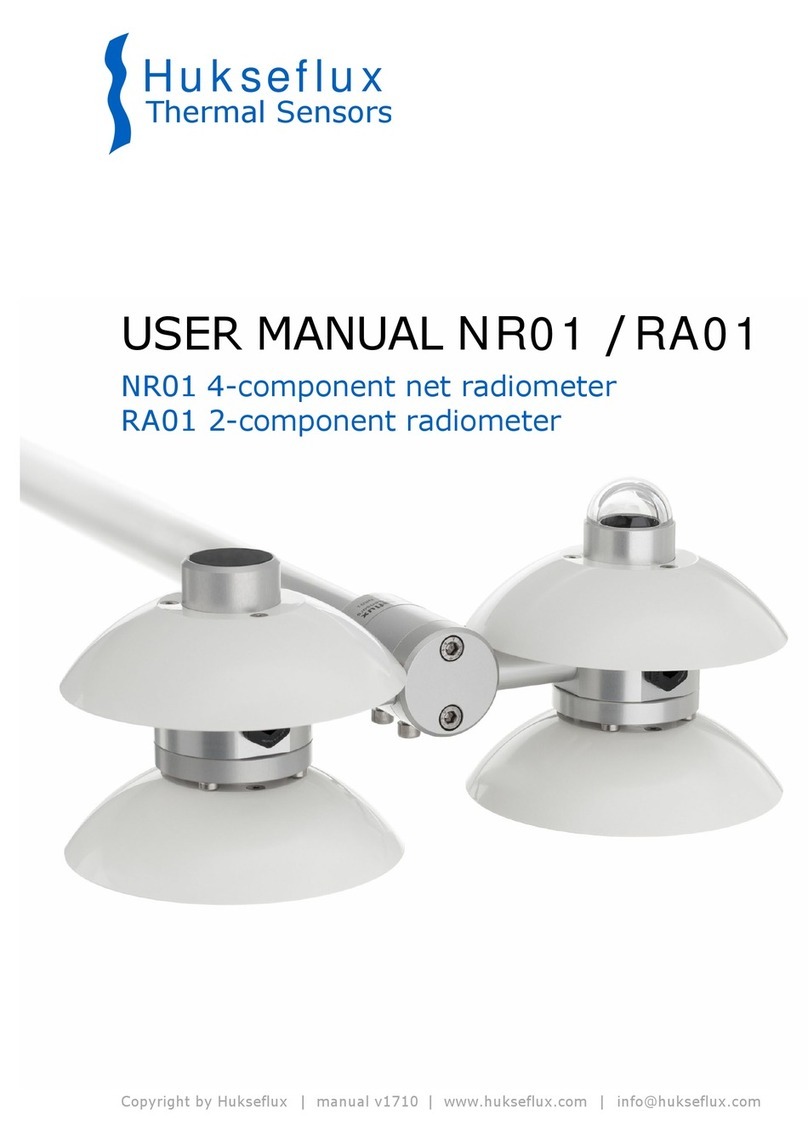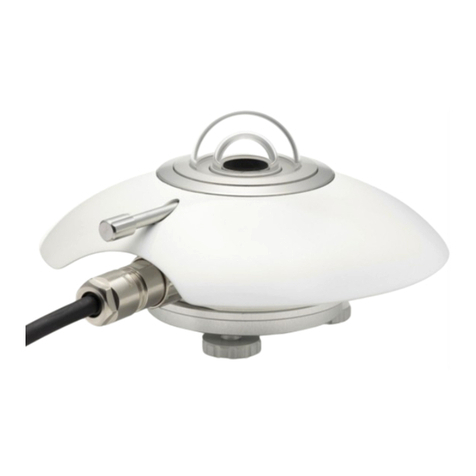IR20 manual v1604 5/39
Introduction
IR20 is a research grade pyrgeometer suitable for high-accuracy longwave irradiance
measurement in meteorological applications. IR20 is capable of measuring during both
day and night. In absence of solar radiation, model IR20WS offers even better accuracy
because of its wider spectral range.
IR20 measures the longwave or far-infra-red radiation received by a plane surface, in
W/m2, from a 180 ° field of view angle. In meteorological terms pyrgeometers are used
to measure “downward and upward longwave irradiance” (WMO definition). Longwave
radiation is the part of radiation that is not emitted by the sun. The spectral range of
longwave radiation is not standardised. A practical cut-on is in the range of 4 to 5 x 10-6 m.
IR20 has a dome with a solar blind filter with a cut-on at 4.5 x 10-6 m, making it suitable
for day- and night observations.
Model IR20WS has a wide spectral range with a cut-on at 1.0 x 10-6 m. It offers a
superior accuracy during night-time, when solar radiation is absent.
The main purpose of a pyrgeometer is to measure longwave radiation. As secondary
measurands, the sky temperature Tsky, and the equivalent surface temperature Tsurface
can be measured. Both are so-called equivalent blackbody temperatures, i.e.
temperatures calculated from pyrgeometer data, assuming the source behaves as a
blackbody with an emission coefficient of 1.
Using IR20 is easy. It can be connected directly to commonly used data logging systems.
The irradiance in W/m2is calculated by dividing the IR20 output, a small voltage, by the
sensitivity and taking in account the irradiated heat by the sensor itself (Planck’s law).
The sensitivity is provided with IR20 on its calibration certificate. Please note that the
IR20 sensitivity is corrected for temperature dependence in the measurement equation
by using 3 additional constants. These coefficients are provided as well.
The central measurement equation governing IR20 is:
E = U/(S0·(a·T² + b·T + c)) + σ·(T + 273.15)4(Formula 0.1)
S = S0·(a·T² + b·T + c) (Formula 0.2)
The instrument should be used in accordance with the recommended practices of WMO.
Suggested use for IR20 and IR20WS:
climatological networks
extreme climates (polar / tropical)
moving platforms (aircraft, buoys)
uncertainty assessment (IR20 + IR20WS)
calibration reference (IR20WS)
